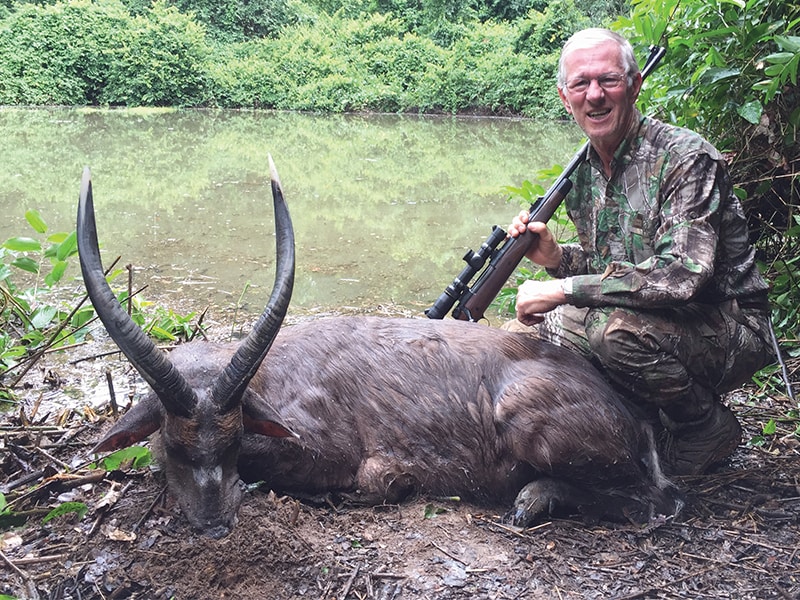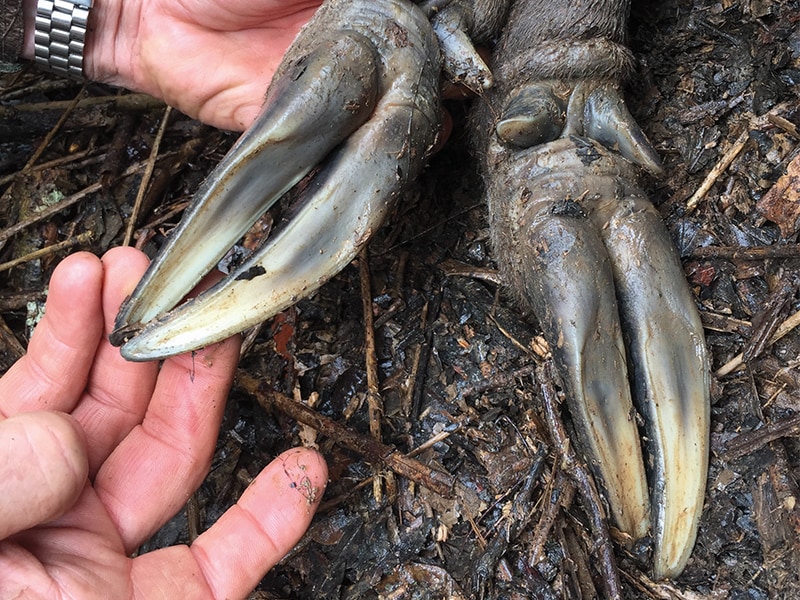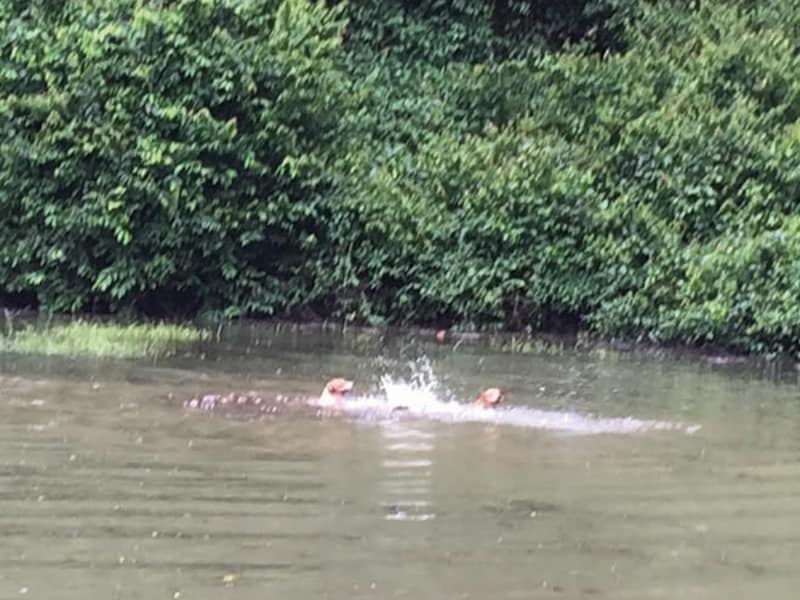Sitatunga in the Water

During the first days of the safari, we concentrated successfully on bongo and buffalo; by the seventh day, we’d hunted sitatunga three different ways. The first two were boring; but the third, although much more difficult, was quite exciting.
Sitting in an elevated blind by a salt lick was the easiest; it required only a short walk on a groomed trail through the jungle, then a climb into a covered but open blind. Had tried that twice, but seen only a dwarf forest elephant (quite rare) and a few birds.
Waiting on a dirt road, while the dogs and trackers pushed one through the jungle trying to drive him out and across the road in front of us, was a little better. We listened for the dogs and ran quickly up or down the road, when necessary, to be in the right position for a shot. The PHs said that they slow down on the hard surface of the road, providing a brief opportunity for a shot in the 50-foot road opening. We found fresh tracks and tried that a couple of times, but never had the opportunity to learn whether I could make that quick snap shot.

Following the trackers and dogs on the track through the jungle – hoping they would bring the animal to bay in a small body of water, where we could get a shot; well, that’s the hardest work, but if successful, the most exciting!
On the main road, we cut a fresh track at 7:30 a.m. Our team of five trackers and eight dogs immediately disappeared into the jungle, while we waited on the road. For over two hours they were on and off, back and forth with him. We moved, as necessary, but he never came out. Finally at 10:15 the dogs brought him to bay about 300 yards into the jungle. We pitched in, one tracker, the PH and myself. No time to cut a trail, just find a way through the jungle, as fast as you can; move, move, move!
It was a 15 minute, all out press; then the jungle ended abruptly at the edge of a waterhole about 40 yards wide. Two dogs and the sitatunga were swimming about 30 yards out. It took a few seconds to get a shot, clear of the dogs, and the hunt was over. That’s the most exciting way to hunt the sitatunga!

